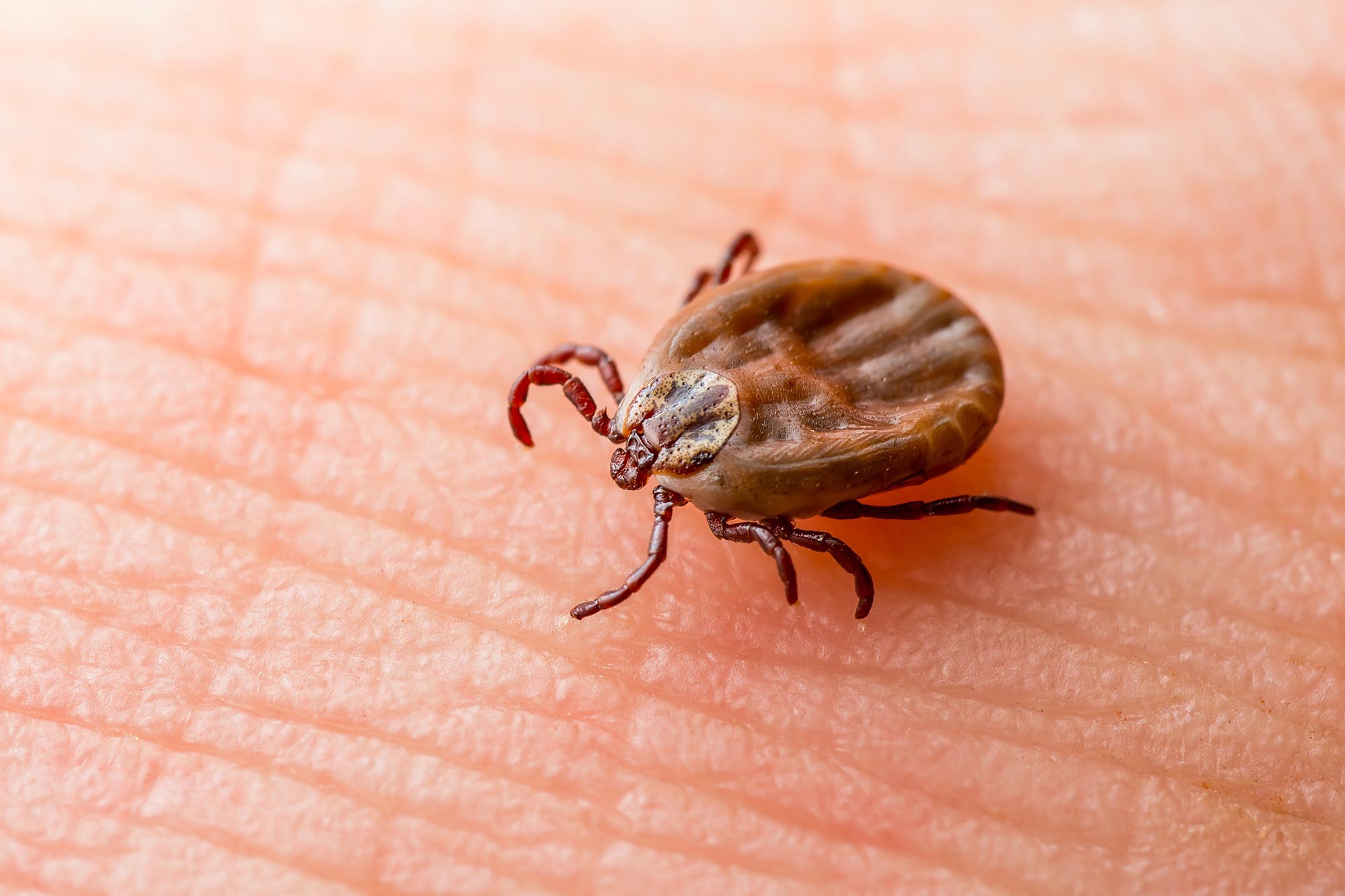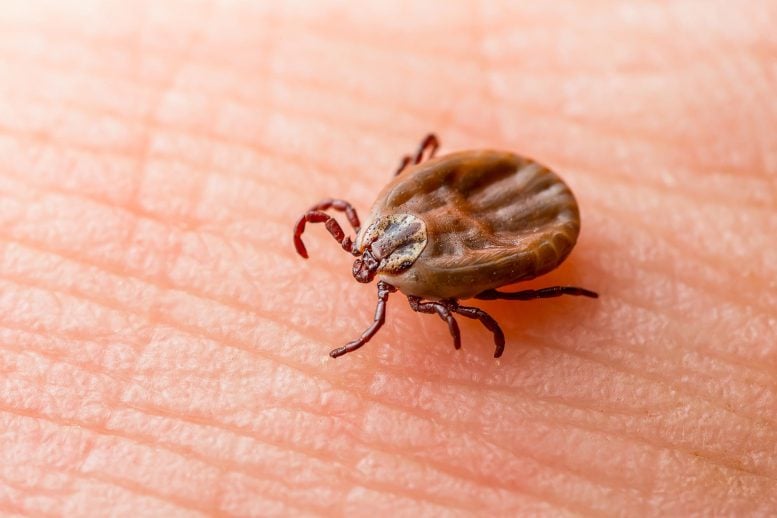

According to a new study, cases of babesiosis rose by an average of 9% annually between 2015 and 2022, with nearly half of the affected individuals also co-infected with another tick-borne illness, such as Lyme disease.
According to a new study led by researchers at Penn State Health Milton S. Hershey Medical Center and Penn State College of Medicine, rates of babesiosis, a tick-borne parasitic disease, rose by an average of 9% annually in the United States between 2015 and 2022. Additionally, four out of 10 patients were found to be co-infected with another tick-borne illness, such as Lyme disease.
“These findings suggest that clinicians should have a heightened vigilance of co-infection of other tick-borne illness among patients admitted with babesiosis,” said Paddy Ssentongo, infectious disease fellow, Penn State Health Milton S. Hershey Medical Center and lead author of the study. “Ticks can carry other bacteria that cause Lyme disease and other tick-borne diseases like anaplasmosis and ehrlichiosis.”
Babesiosis Overview and Rising Prevalence
They published their findings in the journal Open Forum Infectious Diseases.
Babesiosis, sometimes referred to as “American malaria,” is caused by the Babesia parasite and is transmitted from bites of black-legged ticks. It’s found primarily in Northeastern and Midwestern states. Like malaria, the parasite infects red blood cells, and the condition shares many similar clinical symptoms. According to the U.S. Centers for Disease Control and Prevention (CDC), although some people do not develop symptoms, others experience flu-like symptoms. The disease can be deadly for older adults and those with certain health conditions, such as a weakened immune system or lack of spleen.
“Understanding the drivers, dynamics, and control of endemic and emerging vector-borne diseases is critical for global health interventions,” Ssentongo said.
According to the CDC, the prevalence of babesiosis—a tick-borne disease—has been increasing. Researcher Ssentongo noted that climate change could be a contributing factor. Shifts in temperature, humidity, rainfall, and seasonal length have impacted both the range of ticks and the populations of animals like deer that host these ticks. This may lead to ticks being present in more areas than before.
To understand the current prevalence of babesiosis and Babesia co-infections, as well as the impact of Babesia co-infections on mortality risk, the research team used data from TriNetX, a large national clinical database covering over 250 million individuals. They identified 3,521 people diagnosed with babesiosis between October 2015 and December 2022.
Their findings revealed that babesiosis cases grew by an average of 9% annually, with most cases occurring in the summer and primarily in Northeastern states. Among those diagnosed, 42% also had one or more additional tick-borne infections—a higher rate than previously reported. The most common co-infection, affecting 41% of co-infected individuals, was with the bacterium responsible for Lyme disease. Smaller percentages were co-infected with bacteria causing ehrlichiosis (3.7%) and anaplasmosis (0.3%).
When assessing the impact of co-infections, the team found no significant differences in complications or outcomes between the babesiosis-only group and those with co-infections. However, they observed a higher mortality risk in patients with babesiosis alone compared to those with co-infections.
Impact of Co-Infection on Mortality
“Having both babesiosis and Lyme disease seemed not to be associated with worse mortality,” Ssentongo said, noting the finding was surprising. “It’s speculated that the concurrent presence of other tick-borne infections in the blood could alter the immune response by possibly ‘boosting’ it to effectively fight infections.”
The difference in outcomes may also have to do with how other tick-borne illnesses are treated, Ssentongo said. In their study, the team found that the co-infection group was more likely to be prescribed doxycycline, the first-line antibiotic treatment for Lyme disease, anaplasmosis, and ehrlichiosis, compared to the babesiosis-only group. Ssentongo said that it raises a compelling question: Is doxycycline also effective in treating the babesia parasite?
Currently, the treatment of babesiosis depends on disease severity. Treatment typically includes a combination of the antibiotics azithromycin and atovaquone. Red blood cell exchange, where abnormal red blood cells are removed and replaced by healthy ones, can also be considered for severely ill patients such as those with serious organ dysfunction. However, the survival benefit of red blood cell exchange hasn’t been studied extensively.
“For patients with babesiosis, we add on doxycycline as we’re investigating whether or not the patient has Lyme disease or other tick-borne diseases, and we’ve seen better outcomes at our medical center with this approach,” Ssentongo said. He said that there are other case reports where babesiosis has been successfully treated with doxycycline. However, more research is needed to understand the physiological pathways that underlie co-infection and how that might influence treatment protocols.
According to Ssentongo, the most effective treatment approach is preventing tickborne diseases in the first place.
“If you live in areas where babesiosis is endemic, mostly states in the Northeast and the Midwest, take precautions, especially during the summer months,” Ssentongo said. “Practice tick-bite prevention practices. Wear long-sleeved shirts and pants and light-colored clothes. Use tick repellant and check for ticks after spending time outdoors.”
Reference: “Beyond Human Babesiosis: Prevalence and Association of Babesia Coinfection with Mortality in the United States, 2015–2022: A Retrospective Cohort Study” by Paddy Ssentongo, Natasha Venugopal, Yue Zhang, Vernon M Chinchilli and Djibril M Ba, 8 October 2024, Open Forum Infectious Diseases.
DOI: 10.1093/ofid/ofae504